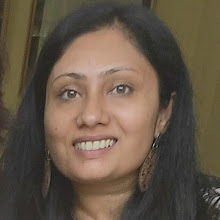Two ideas were thrown up during the brainstorming session last
week to motivate students towards inter-disciplinary STEM learning.
The first was citizen science (or amateur science or crowd-sourced science). The term implies
involvement of the public in inquiry and a shared discovery of new knowledge. A
project like this can involve one person or millions of people working in
collaboration towards a common goal. Typically, public involvement includes collection
of data, analysis, or fact-reporting.
Very diverse fields like geophysics, chemistry ecology,
astronomy, medicine, computer science, statistics, psychology, genetics,
engineering and others have become part of what citizens study recently. The
massive collaborations that can occur through citizen science allow
investigations at continental and global scales and across decades—leading to
discovery that a single scientist could never achieve on their own.
Examples of ongoing and cool citizen science projects include:
Nanocrafter
When you play this game, you’ll create nanomachines using real DNA
sequences and make inroads into the field of synthetic biology
NASA’s SMAP Satellite Mission
The SMAP (Soil Moisture Active Passive) is a NASA satellite that
orbits the earth measuring soil moisture levels. Citizen scientists can collect
soil samples from their area to compare to data provided by the satellite
Play to Cure: Genes in Space
Cancer Research UK created this incredible space adventure game
that allowed users to analyze genetic data and help develop treatments for
cancer while having fun at the same time! The project has now ended, but the
results are sure to have long-lasting benefits
(Source: Discover Magazine)
There is a national Citizen Science Association
conference; The White House’s Open Science and Innovative Forum and a Federal
Crowdsourcing and Citizen Science Toolkit.
The idea is powerful and grasps people’s imagination because
it bridges gaps by harnessing the power of the masses, who are motivated by
curiosity, reuniting science with leisure participation in the
process.
The second was family science nights that brings together families
for a special evening science event in which kids get a chance to share their
learning and show it off to their parents and even discover new things with
their siblings and parents. An evening like this consists of hands-on science
stations with simple instructions set up in tables in a common area. Older
students and teachers cover stations, depending on the activity and help
families run the experiments.
